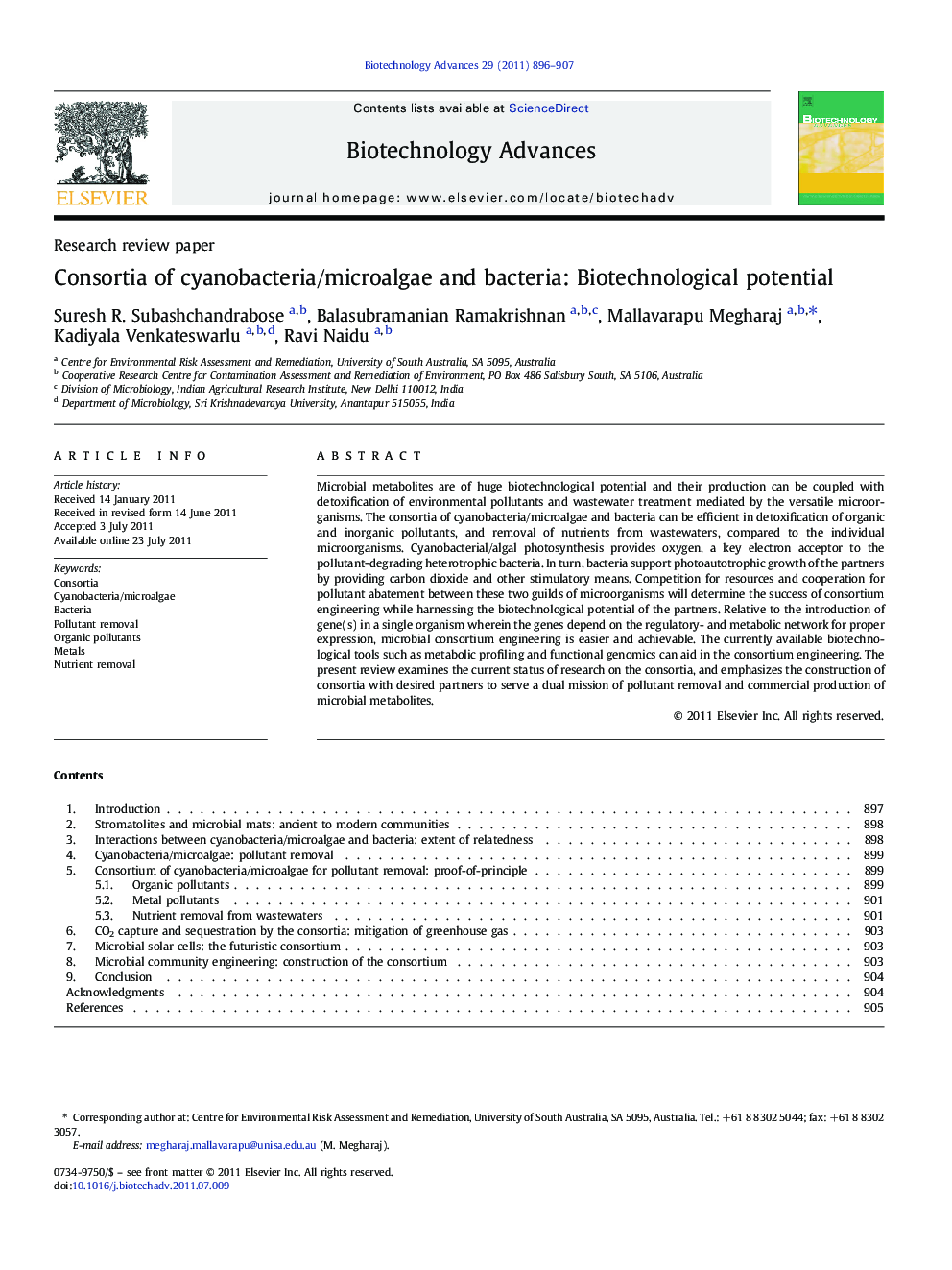| Article ID | Journal | Published Year | Pages | File Type |
|---|---|---|---|---|
| 10231678 | Biotechnology Advances | 2011 | 12 Pages |
Abstract
Microbial metabolites are of huge biotechnological potential and their production can be coupled with detoxification of environmental pollutants and wastewater treatment mediated by the versatile microorganisms. The consortia of cyanobacteria/microalgae and bacteria can be efficient in detoxification of organic and inorganic pollutants, and removal of nutrients from wastewaters, compared to the individual microorganisms. Cyanobacterial/algal photosynthesis provides oxygen, a key electron acceptor to the pollutant-degrading heterotrophic bacteria. In turn, bacteria support photoautotrophic growth of the partners by providing carbon dioxide and other stimulatory means. Competition for resources and cooperation for pollutant abatement between these two guilds of microorganisms will determine the success of consortium engineering while harnessing the biotechnological potential of the partners. Relative to the introduction of gene(s) in a single organism wherein the genes depend on the regulatory- and metabolic network for proper expression, microbial consortium engineering is easier and achievable. The currently available biotechnological tools such as metabolic profiling and functional genomics can aid in the consortium engineering. The present review examines the current status of research on the consortia, and emphasizes the construction of consortia with desired partners to serve a dual mission of pollutant removal and commercial production of microbial metabolites.
Related Topics
Physical Sciences and Engineering
Chemical Engineering
Bioengineering
Authors
Suresh R. Subashchandrabose, Balasubramanian Ramakrishnan, Mallavarapu Megharaj, Kadiyala Venkateswarlu, Ravi Naidu,
